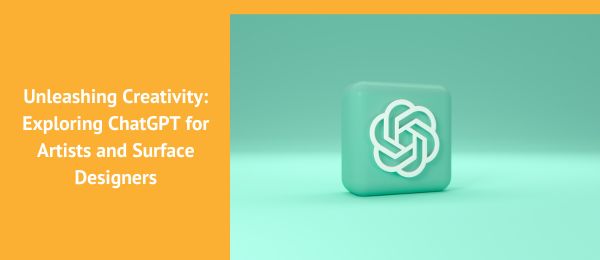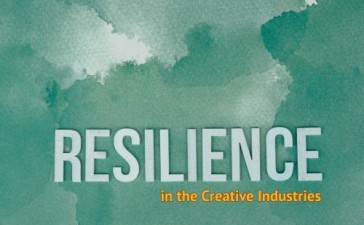In the ever-evolving landscape of artificial intelligence (AI), ChatGPT has emerged as a revolutionary tool, sparking a wave of excitement and curiosity. As we navigate the worlds of technology and artistic expression, this exploration aims to dissect the essence of ChatGPT, its potential impact on artists and surface designers, and the nuanced landscape of its pros and cons.
Understanding ChatGPT
1. ChatGPT Unveiled
ChatGPT, developed by OpenAI, stands at the forefront of language generation models. It belongs to the GPT (Generative Pre-trained Transformer) family, designed to comprehend and generate human-like text based on given prompts. What sets ChatGPT apart is its ability to engage in conversational interactions, making it an ideal companion for those seeking dynamic and responsive AI interactions.
2. Training and Architecture
Powered by deep learning, ChatGPT’s architecture is rooted in transformer models. It undergoes extensive pre-training on a diverse dataset from the internet, learning patterns, language nuances, and contextual information. This pre-training enables ChatGPT to generate coherent and contextually relevant responses.
The Hype Surrounding ChatGPT
1. Conversational Brilliance
The allure of ChatGPT lies in its conversational brilliance. Artists and surface designers can engage in a dialogue with the model, soliciting suggestions, brainstorming ideas, or seeking inspiration. This interactive element has fuelled the hype, turning ChatGPT into a dynamic partner in the creative process.
2. Limitless Inspiration
ChatGPT’s vast knowledge base becomes a wellspring of inspiration for artists and designers. It can introduce new concepts, share art history insights, or provide fresh perspectives, expanding the creative horizons of those who harness its capabilities.
3. Accessibility and Inclusivity
The user-friendly interface of ChatGPT ensures accessibility for creators across varying technical backgrounds. This democratisation of AI empowers artists and surface designers who might not have extensive technical expertise, fostering inclusivity within the creative community.
How ChatGPT Supports Artists and Surface Designers
Ideation and Conceptualization
1. Prompt-Based Concept Exploration:
- Artists can use prompts to explore diverse concepts and themes, kickstarting the ideation process. ChatGPT’s responses may introduce unexpected elements, fueling creative brainstorming sessions.
2. Dynamic Collaboration:
Surface designers can engage in dynamic conversations with ChatGPT, discussing design elements, color schemes, and visual aesthetics. The model’s adaptive nature facilitates a collaborative exchange, contributing to innovative design solutions.
Content Generation and Description
1. Artistic Descriptions:
ChatGPT excels in generating vivid and descriptive language. Artists can utilize this capability to craft compelling descriptions for their artworks, enhancing the narrative and storytelling aspects of their creations.
2. Design Brief Interpretation:
Surface designers can present design briefs to ChatGPT, receiving articulated interpretations that may inspire the creation of intricate patterns, textures, and visual motifs.
Learning and Skill Enhancement
1. Art Historical Insights:
- Artists can delve into art history discussions with ChatGPT, gaining insights into various movements, styles, and artists. This knowledge can serve as a rich resource for honing artistic skills and expanding creative perspectives.
2. Technical Guidance:
- Surface designers may seek technical advice related to materials, techniques, or digital tools, fostering a learning environment where ChatGPT becomes a knowledgeable guide in the pursuit of design mastery.
The Pros and Cons of ChatGPT
Pros
1. Inspirational Catalyst:
- ChatGPT serves as a potent source of inspiration, triggering fresh ideas and breaking creative stagnation.
2. User-Friendly Interaction:
- The user interface is designed for ease of interaction, making ChatGPT accessible to a broad spectrum of creators.
3. Adaptability in Collaboration:
- ChatGPT adapts to various creative workflows, offering flexibility in collaboration for both artists and surface designers.
Cons
1.Occasional Lack of Coherence:
- In extensive interactions, ChatGPT may exhibit occasional lack of coherence or generate responses that deviate from the intended context.
2. Limited Domain Specificity:
- While adept at general conversation, ChatGPT may lack specific domain knowledge, posing challenges for highly specialized or technical artistic endeavours.
3. Ethical Considerations:
- AI-generated content raises ethical considerations regarding ownership, authorship, and potential biases embedded in the training data.
Conclusion
ChatGPT stands at the intersection of technology and creativity, offering a dynamic platform for artists and surface designers to embark on a journey of exploration and innovation. As the creative landscape continues to evolve, embracing the opportunities presented by AI models like ChatGPT becomes a step toward unlocking boundless creative potential. Navigating the pros and cons, artists and designers can harness ChatGPT as a valuable tool, weaving it seamlessly into the canvas of their artistic endeavours





